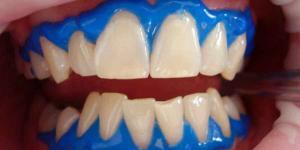A dental filling is one of the common treatments in a dental clinic. As much as the process is highly successful, a few patients have complications and seek for solutions.
Dental fillings come in different types that include gold, silver amalgam, ceramic, composite and glass ionomers. The quality dentist Brooklyn will pick the right material depending on various factors:
- The strength of the material. The material needs to withstand pressure and grinding. As much as they wear out with time, the filling needs to last long otherwise you will find yourself looking for a replacement just after a few weeks. This is also costly.
- The fillings need to be pleasing in appearance. They should match with your existing teeth to improve your smile.
- The material shouldn’t expand and contract due to changes in temperature. Material that expands and contracts will lead to cracking of adjacent teeth.
- The cost of the procedure also comes into play when selecting the right one. You need to go for a material that you can afford, rather than go for any material.
- Durability is also an issue. Glass ionomers usually last for a shorter period compared to other materials.
The dentist will guide you on the advantages and disadvantages of each material before they fit it.
Today we look at what happens after completion of this dental treatment, and several solutions on mitigating the complications.
Post-treatment Pain
Pain is an ordinary reaction after the treatment. One of the main causes of pain is the high position of the tooth that has been treated, which means that any little pressure irritates the nerves, causing pain.
The dentist usually does all they can to achieve the perfect alignment at the first attempt, but at times this isn’t the case. If the feeling isn’t right when you speak or chew, then the filling hasn’t aligned properly with the other teeth.
When this occurs, the dentist will have the tooth smoothed out or reshaped to fit the alignment. The filling is also prone to chipping or cracking
Toothache after the treatment might indicate dental decay. If this is the case, then the dentist needs to find out if the cavity is on the surface or it is deeper than normal, which necessitates the use of root canal therapy.
Pain in Neighboring Teeth
Some patients experience pain in neighboring teeth. Well, it is usually typical, and it doesn’t indicate an issue with your teeth at all. It is usually a response to the treatment, and it usually goes away in a few days. If the pain persists, call the dentist ASAP.
Teeth Sensitivity
It isn’t uncommon to experience sensitivity in the region of the treatment. This can go on for three weeks, even more.
You also experience sensitivity on biting down on a hard item, such as food.
To avoid the sensitivity, use special toothpaste meant for such a condition. Additionally, avoid any hot or cold beverages and spicy food. Chew from the “good” side of the mouth to let the filling heal.
If the pain persists for long, contact the dentist.
Eating Tips after the Treatment
One of the biggest questions the dentist has to answer is what kinds of foods to eat after the treatment. What you eat depends on the material used to make the filling.
Some materials harden instantly, and this allows you to enjoy your food immediately. Some filling materials don’t solidify right away and you have 24 hours before you consume solid foods.
Before you begin eating, wait for the anesthesia to wear off; otherwise, you might bite your oral tissues.
You should avoid solid foods, candies, and sticky foods for two weeks or more. If you feel any sensitivity, avoid hot or cold beverages.
Dental hygiene should be as per your routine – do this at least daily.
Stop the Pain
If you feel pain, use pain medication to relieve the distress.
Future Cavities
If you don’t take care of the teeth, a cavity might develop in another tooth. In case of sensitivity, talk to your dentist for a different dental filling. The dentist will come up with a way to handle the cavity.
In Closing
What happens after you get a dental filling depends wholly on the procedure and the quality dentist Brooklyn expert that you work with. Take time to identify the right dentist to work with and follow all instructions that you are given after the procedure. Failure to follow the instructions is a precursor for disaster – you stand to lose the filling or experience other complications.



